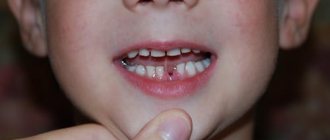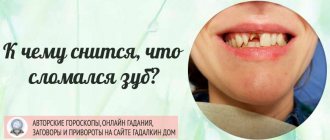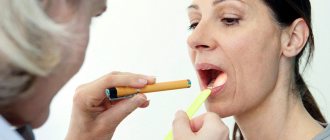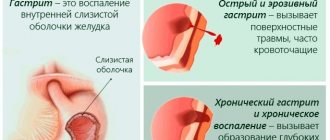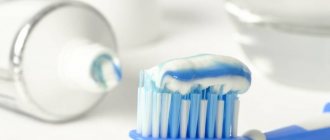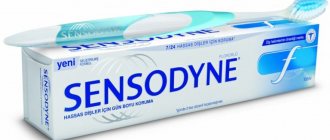Fluoride in toothpaste: benefit or harm?
The war against fluoride in dentistry began in the middle of the last century in the United States. More precisely, this country was the first to begin fluoridating drinking water in order to strengthen the population’s tooth enamel. Then, in 1969, the technique received WHO approval, and many countries around the world began to adopt advanced American experience. Only after a wave of fluorosis (a chronic disease caused by excess fluoride in the body and affecting not only teeth, but also skeletal bones) swept America in the 70s, the feasibility of water fluoridation was called into question. Despite the fact that at the beginning of the 21st century, reputable scientists, including the Australian researcher W. Evans, came out in support of fluoridation, discussions about the benefits of fluoride in medical circles continue to this day.
So is fluoride in toothpaste actually harmful, or are rumors about its negative effects on humans greatly exaggerated? Let's try to dot all the i's in this issue.
Food sources
Fluoride contains: asparagus, avocado, Brussels sprouts, carrots, cumin, cauliflower, cucumbers, dates, lemongrass, parsley, turnips, beet tops, dandelions, sunflower seeds, garlic, spinach, tomatoes, green leafy vegetables, nuts (especially almonds) , turnip, seaweed.
By the way, it is interesting that fluorine has the ability to “migrate” into water, which is especially useful for decoctions and teas.
For example, when black tea is brewed, approximately 70-90 percent of the fluoride passes from the leaves into the liquid. Approximately 30% of the mineral contained in mint is released, approximately 20 percent is released from rose hips, and chamomile provides only 5% of the useful microelement. Table of fluoride content in some products
| Product (200 g) | Fluoride (mg) |
| Tea (black, green, white) | 20 |
| Mackerel | 3 |
| Tuna | 2 |
| Mineral water | 1,5 |
| Hake | 1,4 |
| Pollock | 1,4 |
| Cod | 1,4 |
| Blue whiting | 1,4 |
| Walnuts | 1,3 |
| Horse mackerel | 1 |
| Flounder | 0,9 |
| Sea bream | 0,86 |
| Mackerel | 0,86 |
| Salmon | 0,86 |
| Trout | 0,86 |
| Cancer | 0,86 |
| Scallops | 0,86 |
| Oysters | 0,86 |
| Mullet | 0,86 |
| Lamb meat | 0,3 |
| Pork | 0,3 |
| Bird | 0,28 |
| Chicken eggs | 0,18 |
| Buckwheat | 0,1 |
| Semolina | 0,1 |
| Milk | 0,1 |
| Potato | 0,1 |
| Pasta | 0,1 |
| Beef meat | 0,032 |
| Radish | 0,012 |
| Carrot | 0,006 |
Fluorine and fluorides are not the same thing
Often, opponents of the use of fluorine confuse key concepts: fluorine is a reactive gas that is poisonous to the human body, and fluorides, its octane-based derivatives, are absolutely harmless. Only fluorides (such as sodium fluoride) are used to make toothpaste. Moreover, their concentration in a tube of paste is strictly regulated.
ATTENTION! According to regulations, the permissible concentration of fluoride in toothpaste ranges from 1350 to 1650 ppm. This indicator depends on whether the paste is therapeutic and prophylactic or is intended purely for the prevention of caries (1ppm = 0.0001%).
Research
If serious poisoning is suspected, the patient is hospitalized. The following blood tests are performed in the hospital:
· Blood sugar (hypoglycemia).
· Electrolyte balance is especially important to monitor.
· Hypocalcemia is usually the most serious and pathogenic variable.
· Hypomagnesemia and hyperkalemia are also observed in poisoning.
· Fluoride poisoning can cause liver and kidney damage. ALT and creatinine should be measured.
Other studies:
· ECG and cardiac monitoring in severe cases. There may be a widened QRS complex, arrhythmia, shock, and cardiac arrest.
Fluoride in toothpaste and water are different things
The dangerous disease fluorosis occurs due to the accumulation of fluoride in tissues if it enters the body with water. According to GOST, the fluorine content in water can vary from 0.5 to 1 milligram per liter, depending on the geographic region. It is physically impossible to be poisoned by fluoride through toothpaste, since fluoride is not absorbed in the oral cavity. For this to happen, you need to eat fluoride toothpaste on a regular basis instead of using it for its intended purpose.
History of discovery
The first fluorine compound was described even before the discovery of the element itself. This compound is the mineral fluorite, also known as fluorspar, calcium fluoride, CaF2. The properties of fluorite were described back in the 16th century. German scientist Agricola. In those days, fluorspar was used in metallurgy.
The mineral increased the fluidity and reduced the temperature of metal slag. As a result, slags in melts were more easily separated from metals during their smelting.
The name fluorite comes from lat. fluo – flowing.
A remarkable property of fluorite: when heated after irradiation with ultraviolet light, it emits a glow. This is where the term “fluorescence” comes from.
In 1771, the Swedish chemist Scheele reacted fluorite with sulfuric acid. In this case, hydrofluoric acid was obtained - an aqueous solution of hydrogen fluoride, HF.
Some mistakenly considered it to be the oxide of an unknown substance fluorium or fluorine. Later, in 1810, the English chemist Davy isolated chlorine by electrolysis of hydrochloric acid, HCl. And then he logically assumed that hydrofluoric acid is a compound of hydrogen and fluorium.
And if so, then this substance can also be isolated in much the same way as chlorine. The famous French scientist Ampere, having familiarized himself with the properties of hydrofluoric acid, proposed replacing the name “fluor” with “fluorine” (from the other Greek phtoros - death, destruction). However, it was not possible to obtain it for a long time.
The reason is the high chemical activity of this substance. Only in 1886 did the French chemist Moissan manage to isolate pure F by electrolysis of hydrogen fluoride. Due to the difficulty of obtaining and storing it, it did not find practical use for a long time. In the second half of the 20th century. it began to be used for industrial purposes, as well as for the separation of uranium isotopes in the production of nuclear weapons.
Fluoride is a real protection against caries
Today, there are dozens of scientific papers proving a positive relationship between the use of fluoride in toothpaste and the remineralization of teeth. It's simple: fluoride ions are not destroyed in an acidic environment, penetrate the structure of tooth enamel and, combining with calcium crystals, prevent its destruction.
Thus, if you are faced with a difficult choice of toothpaste with fluoride, the best solution would be to make it under the guidance of your dentist, who will select a product with the required concentration of the substance, taking into account the condition of your teeth, region of residence and the presence of concomitant diseases.
Fluoridation of teeth in dental
Deep fluoridation is carried out using a modern APF system.
Fluoridation of teeth is a procedure for the prevention and strengthening of the superficial and deep layers of tooth tissue. Teeth require two substances - calcium and fluoride, but they constantly displace each other from the surface of the enamel. Therefore, a new preparation APF gel has appeared, based on nanotechnology, which is capable of saturating the deep layers of enamel with calcium, and the upper layers with fluoride. The fluoridation procedure for teeth using the APF system takes 10-20 minutes. To consolidate the effect of the procedure, a product for further home care is given to your home. This procedure allows not only to protect teeth from caries, but also to restore enamel with caries already present on the surface.
Caries and toothpaste without fluoride
The purpose of brushing teeth twice a day is to eliminate the harmful effects on a person's teeth caused by bacteria that cause tooth decay. Is it possible to achieve this by using exclusively fluoride-free toothpastes every day? Most dentists are inclined to believe that this is 100% impossible. However, it is possible to find a compromise: for example, brush your teeth three times a week with fluoride-containing toothpaste, and the rest of the time use alternative methods.
- Get fluoride from food. One of the common misconceptions about fluoride is that, in addition to water, it can only enter the body from special toothpaste. In fact, in order to cover the body’s daily need for this chemical element (and it is 3.5 milligrams for adults and 0.5-2 milligrams for children), it is enough to regularly eat foods naturally rich in fluoride: green tea, seafood , cherries, beans, egg yolk.
- Use natural toothpastes. Let’s make a reservation right away: they can be considered “natural” conditionally. We are talking about pastes, the chemical composition of which, instead of fluorine, includes hydroxyapatite (a synthetic analogue of tooth enamel) and components of plant origin that have an antibacterial effect: mint extract, sea salt, mumiyo and others.
- Take pills... for caries. Yes, they exist and have long been proven to be 90% effective. Medicines are produced on the basis of lactobacilli, which inhibit the proliferation of cariogenic microorganisms, and as a side effect they also normalize the balance of microflora throughout the gastrointestinal tract.
- Only with a competent combination of several methods of prevention, observance of basic oral hygiene (implying the use of rinse, irrigator and floss in addition to toothpaste), as well as regular visits to the dentist for examination, the occurrence of caries can be successfully prevented.
Element characteristics
Fluorine is a chemical with a pungent odor and a strong oxidizing agent, like all halogens. Under normal conditions it has the appearance of a light yellow gas. Translated from Greek, its name means “harm,” which reflects the toxic properties of the element. Fluorine is even more harmful than lead.
It accumulates in the ground as a result of volcanic activity. A large amount of fluorine is contained in one of the most popular ornamental minerals - sparkling fluorite, which is also used in metallurgy, optics, the chemical industry and in the manufacture of glazes for ceramic products.
Fluoride is present in many foods, such as onions, fish, lentils, wine, and (in greatest quantities) regular water.
Forewarned is forearmed!
Let's summarize: the harm to human health from using toothpaste with fluoride today cannot be considered a scientifically proven fact. Research in this direction is carried out regularly around the world, and its results can be found from open sources. It’s up to you to decide which product to choose for daily oral care for yourself and your loved ones. But when making such a serious choice, remember two important nuances.
- Fluoride is poison, and fluoride is medicine.
- Excess fluoride leads to fluorosis, while its deficiency makes the way for caries easier.
Impact on general health
Caries is the most obvious, but by no means the only dental problem. Bacterial plaque that forms on the surface of teeth can also cause gum disease. Unfortunately, many people do not pay enough attention to the health of their gums - and completely in vain, because it significantly affects their overall health. With periodontal diseases, bacteria can spread from the oral cavity through the bloodstream to other organs and tissues, which often causes atherosclerosis, the development of cardiovascular diseases and stroke.
